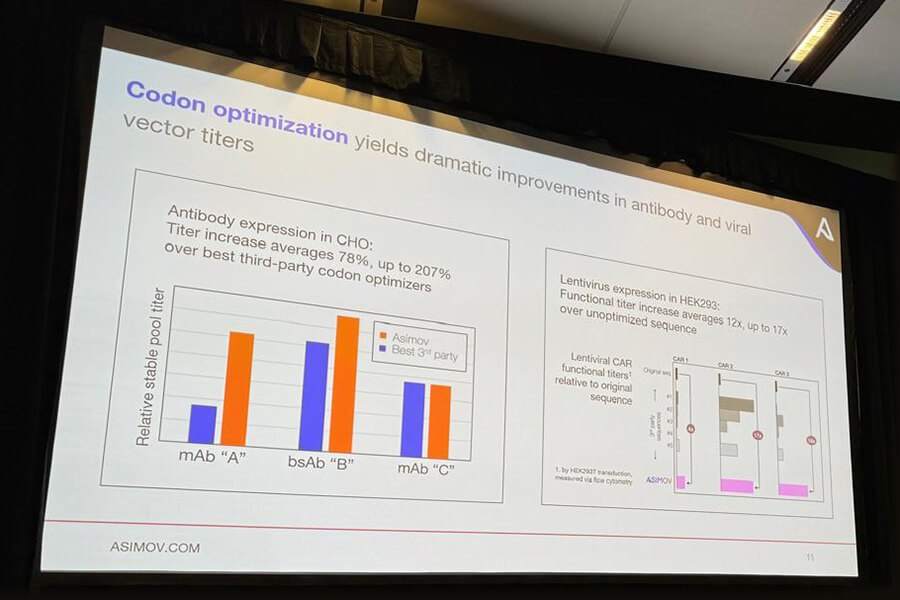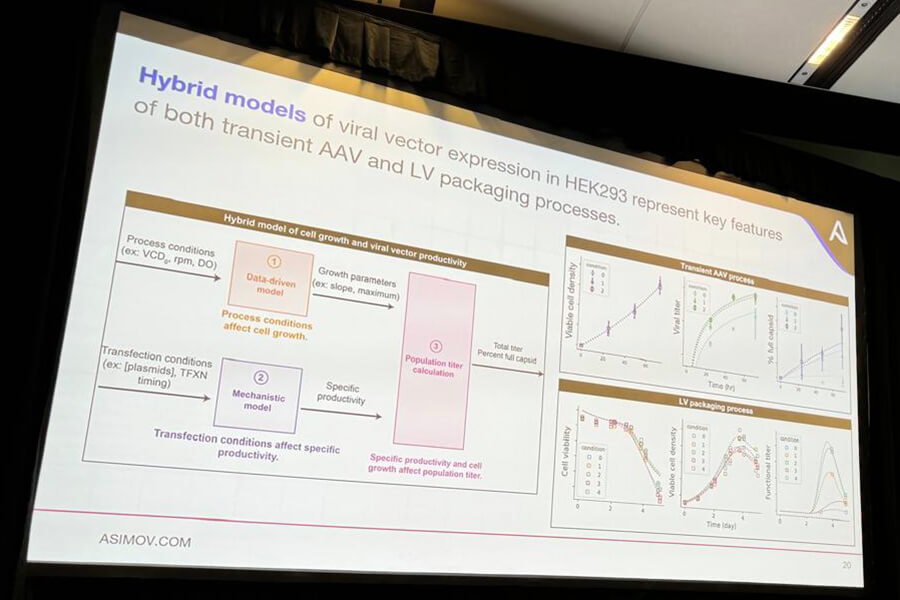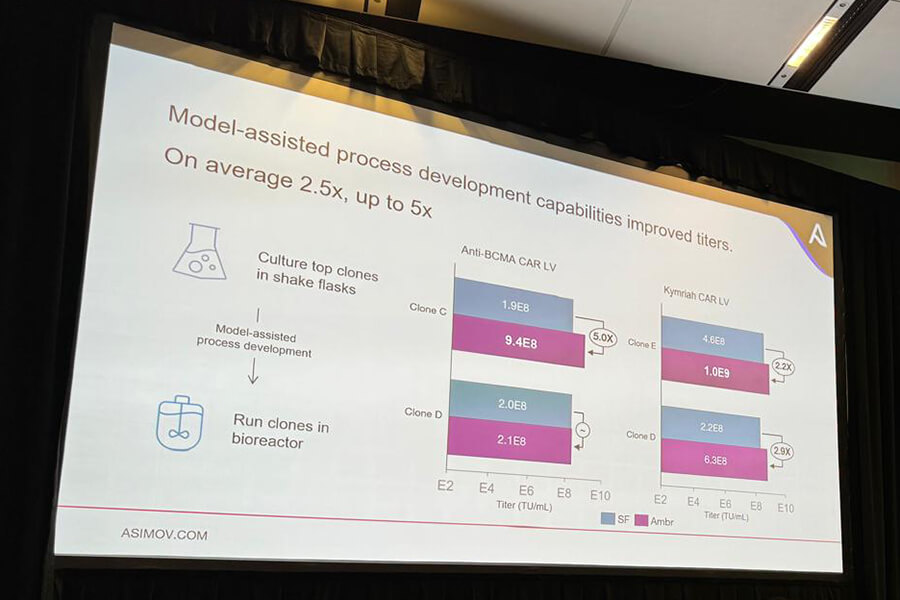The cell therapy industry stands on the brink of a digital revolution.
If we can leverage digital technology across the CGT ecosystem, we firmly believe it can transform R&D, clinical development, manufacturing, and patient access.
One area ripe for this digital transformation was evidenced by Will Johnson’s eye-opening presentation at ISCT’s Vancouver conference. Will, Head of Process Modelling at Asimov, showcased how applying advanced digital technologies to bioprocess development and vector design could dramatically improve efficiency and outcomes.
His talk, “From Genetic Design to Bioprocess Performance: Toward Holistic Optimization of Upstream Viral Vector Bioprocesses,” outlined an innovative approach to integrating computational modeling and machine learning into every step of the cell therapy production process. Central to this approach is the application of digital technologies to create a holistic, end-to-end optimization of viral vector bioprocesses. It’s safe to say that these digital tools are revolutionizing the way cell therapies are developed and manufactured.
Efficiency and Performance Gains
Codon Optimization
One of the most striking examples of the power of digital technologies in this field is Asimov’s codon optimizer. By leveraging advanced algorithms, we’ve seen remarkable improvements in protein expression, including a 78% increase in antibody titers in CHO cells and up to 17-fold increases in lentivirus expression in HEK293 cells, underscoring the transformative potential of digital technologies in cell therapy production.

Model-Based Process Development
Will discussed hybrid models, a combination of mechanistic understanding and data-driven insights, which can predict and optimize complex processes like AAV and LV packaging. Perhaps most importantly, we learned how these digital technologies enable a more agile and efficient development process.

By using model-assisted process development, Asimov has achieved average titer increases of 2.5x, with some cases showing improvements up to 5x. Even more impressively, their platform improvement efforts, driven by digital optimization, have led to a 30x average improvement in lentiviral titer.

This fusion of biological knowledge and artificial intelligence is opening new frontiers in cell therapy development.
Conclusion
We’re all about patient access, and the role of digital technologies in enabling that. It was clear that the implications of Asimov’s digital advancements extend far beyond efficiency gains; improved viral vector production could translate directly into broader access to life-saving cell therapies. By reducing production costs and increasing yields, these digital technologies could help make cutting-edge treatments available to more patients around the world.
From personalized medicine to telemedicine, digital tools are reshaping every aspect of healthcare delivery. Asmiov’s technology represents one of many much-needed steps towards bringing the cell therapy industry into the digital age.
The road ahead for cell therapy is undoubtedly digital.
We believe that if our industry continues to push the boundaries of what’s possible with computational modeling, machine learning, and other digital technologies, we can expect to see even more dramatic improvements in cell therapy efficacy and access.
The ultimate beneficiaries of this digital revolution will be patients, who stand to gain access to more effective, more affordable cell therapies. In this light, the importance of applying digital technologies to cell therapy cannot be overstated – it’s not just about improving processes, it’s about transforming lives.







